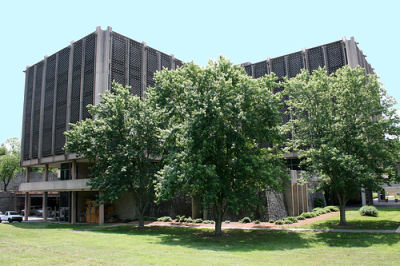|
History is the sum total of things that could have been avoided …
Konrad Adenauer
|
A few years back, I heard Rosalyn Carter speak at a dinner. Her talk was organized around just one simple fact. "The largest mental hospital in America is the L.A. County Jail," she said. And I thought about Philippe Pinel and how the carousel of history seemed to have made it all the way back around. The mentally ill were back in jail:

What got me going on this history kick [on history 1 …, on history 2 …] was a recent drive through my old neighborhood in Atlanta near Emory University where I spent my adult life. Recalling Ms. Carter’s talk was just part of a collage of memories. I’ll try to be brief [ha!].
In the 19th century [1842], Georgia opened a State Hospital [State Lunatic, Idiot, and Epileptic Asylum] in its then capital of Milledgeville modeled on the principle "the institution as family." Central State, as it was known, followed the slowly declining trajectory of most of those facilities, and by the mid 20th century, it was an overcrowded warehouse, home to 12,000 mental patients. Flash forward to the 1960s. In 1965, the State of Georgia and Emory jointly opened the Georgia Mental Health Institute near the Emory campus on a donated estate [from a Coca Cola family]. It was built as a research and training facility – a jewel in the crown. The large central building was filled with offices, classrooms, a library, and research labs. The patients lived in eight cottages on the grounds. But Camelot was brief, and Governor Jimmy Carter took the hospital over to become a regional hospital in the early 1970s during the era of the Community Mental Health Movement. Emory continued to share the main building with State Mental Health, but the cottages became a public State Hospital. Half of my in-patient year was spent on Unit 5. Those dusty books I talked about [on history 1 …] were in the still lavish library upstairs. It’s where I read about those waves of reform and Therapeutic Zeal turning downstream.

It was a great place to be a resident. After six frantic months at Atlanta’s downtown Grady Hospital [something like a war zone], the pace and the place at GMHI gave me time to think about my patients and their profound psychiatric illnesses. Later, when I directed the Emory Residency Program, my departmental office was in the GMHI main building, but by then I could feel things fading. The library stopped repopulating itself and the periodicals were moved to Emory. The catchment area for the hospital grew and the length of stay shrunk and crossed the line into the impossibility known then as "the revolving door." I actually did a study [lots of graphs and stats] to show that the hospital’s limit had long been passed, but the Superintendent wouldn’t let me present it – something like data ownership. And so, I finally had to stop rotating residents and students through GMHI or letting them take call there. It was no longer a training facility, but the loss of the placement [and the residency stipends] put a huge strain on our already thinning budget. Our aging chairman who had masterminded and proudly cut the ribbon when GMHI opened in 1965 retired in the mid 1980s – not totally bitter [but more than he’d admit]. That opened a door and the revolution of the 1980s in psychiatry finally arrived in Atlanta. I left in the following year.
I didn’t keep up with the timeline precisely after that, though I still lived nearby and frequently drove by or attended the odd conference in the auditorium. GMHI was closed as a hospital in the late 1990s. The main building is still used for continuing education classes, unrelated to matters mental. If you squint as you drive by, it looks almost like it did when I arrived, but not if you open your eyes. These are some contemporary pictures I found – the Unit out back where I was a resident on the left and the now empty main library where I spent so many hours on the right:


Central State Hospital in Milledgeville finally closed for good in 2010 [at age 166 years]. Some pictures, then and now:


-
The first paradigm was the State Hospital system. "In the first decades of the 19th century there was a movement in several states to reform prisons, create public schools, and establish state-run hospitals for the mentally ill," Wikipedia. It was an outgrowth of the reform movement [Pinel] transplanted to the new world, consistent with the ideals of the French and American Revolutions – "moral treatment" "the institution as family". A century later, the patients in what those hospitals became may have been better off than in the days of Les Misérables, but not by a lot. It was a paradigm well beyond its days and funding.
-
The second paradigm was long term, in-hospital, psychoanalytic or psychodynamic milieu treatment. GMHI was conceived as a place where selected referred patients would be studied intensively, finally doing the research on outcome and process that such therapies had always lacked. The units were staffed with experienced and talented psychiatrists and mental health professionals of every flavor; the place was swarming with trainees of all kinds; and there was actually a small golf course woven among the units [a few greens still visible in the winter grass in my day]. But before it really ever got off the ground, it was commandeered by Governor Carter who was and is [along with Rosalyn] a lifelong advocate for the chronically mentally ill. He is a practical man. That kind of treatment had met its Waterloo, at least in Georgia, at least on the public nickel, but it was in trouble elsewhere as well.
-
The final paradigm was the Community Mental Health Movement. Unlike the more radical earlier biological treatments, the antipsychotics presented the possibility of downsizing the overcrowded and badly underfunded State facilities. Realizing that this was going to be a cataclysmic transition, the federal government passed a generous Community Mental Health Act to assist the States. It was a double edged sword in that it really helped, but also may have supercharged the transition beyond its possibilities. Whatever the case, by the time I came along, the political climate had changed; the federal well-spring had dried up; and the existing systems were becoming overwhelmed. The dream for strong community mental health care and resources with adequate back up hospitalization was sliding into the sea, taking GMHI along with it.
Thank you for sharing your memories. I admire your decision for removing trainees from an inpatient unit that was no longer a good educational experience. Several years ago, I thought I was fortunate to go to one of the (relatively) few child and adolescent psychiatry programs in this country with an inpatient unit in the local children’s hospital. However, it turned out to be one of the least favorite rotations for me and many of my colleagues.
Two decades ago, the average length of stay there was over a month; a decade ago, it was 2-3 weeks; in the last few years, it has been cut down to under 7 days. The hospital was glad to be “serving more patients,” even though we barely got to know the very complicated children or their family dynamics during their short stays. It was quite surreal to me that the folks who ran the unit could not seem to understand why the child psychiatry residents did not think it was a good training experience.
Thank you for bringing this up, Dan. Length of stay is a piece of the historical record that has been largely forgotten. When I joined the faculty at The University of Michigan, Ann Arbor in 1973, George Curtis and I became responsible for a 26-bed inpatient adult psychiatry unit. It had been operated as an inpatient psychoanalytic service, and the average LOS was 18 months. That’s right… 18 months. On the child service at the same time the average LOS was over 4 years. Costs were covered by indemnity insurance and state subsidies.
George and I set about reducing LOS for the adult patients down to 5-8 weeks, which is unthinkable today. But under this arrangement we could withdraw patients from their (by definition) ineffective medications under controlled inpatient observation, then document the unmasked psychopathology, along with the Axis II complications of each case (chiefly through highly professional nursing observations), then come up with a definitive diagnostic formulation and treatment plan, which was implemented long enough to see meaningful improvement before discharge. My argument always was that time spent at the front end on drug withdrawal, careful inpatient observation, and diagnostic clarification would pay off later in more effective management at lower cost. It didn’t need to be 18 months… 5-8 weeks felt about right. In parallel, we developed integrated outpatient services for the discharged patients. That included the first lithium clinic west of the New York-Philadelphia region. I ran it myself. So we knew when their diagnostic status changed – from unipolar to bipolar disorder, say, and that was updated in their research files.
Our visionary psychiatry department chairman at the time, Albert Silverman, ran administrative interference for us against the increasing budgetary pressures, and we in turn opened a spigot of federal and new state funding. In this win-win environment we conducted meaningful and non-commercial clinical research that resulted in landmark publications. This was also an excellent training environment for young psychiatrists, whether they went on to a career in clinical work or in research. Our Clinical Studies Unit in Ann Arbor became the kernel from which the National Network of Depression Centers later arose. Those were the days!
Mainstream psychopharma-based psychiatric practice have dug itself into a hole between a rock and a hard place, I think. Our Western pendulum firmly on the beaten, broad path of money and external, vested interests. There are other paths, less travelled, longer, winding, vibrant , manyshaded colours, as varied and labyrinthine as life itself. Different histories, as dr Mickey recently wrote, and different paths possible through darkness and pain, where big business do not thread.
With the basics necessities of life provided, basic safety, most people may find their way, as demonstrated time and again through recent history, from the Quakers to Loren Mosher and varieties of Soteria Houses in Europe and America, and by attentive, careful therapists, anywhere.
We live “Not by bread alone”. Helpers must invest some of themselves, their hearts, to be truely helpful.
I don’t forget the trembling passion in the voice of the man opposing the technological approach to human suffering, offered on his shiny, perfectly prepared overheads, by E Fuller Torrey at the ISPS-convention in 2000 in Stavanger. Later , reading an article of his, telling how nervous he had been, I discovered that he was John Read, Auckland University, NZ. Fuller Torrey exited so hastily that he seemed to flee from the conventionhall..
I read a quote recently, attributed to a blind and deaf person. “When you touched my hand I felt less lonely.”
Less lonely, less pain, less fear…?
Not content with my bumbling translation of Olav H Hauge, please bear with me for giving it another try, maybe tempting some to seek him out. Literature, poetry, plays are wells of wisdom on the human condition not so easily fixed by big, modern sorcerers…
Year in and year out you have sat
bent over the books
collecting more learning
than you will need
in nine lives
All in all, so little is needed
and that little has always been known
to the hearts
In Egypt, the God of learning had a monkey’s head